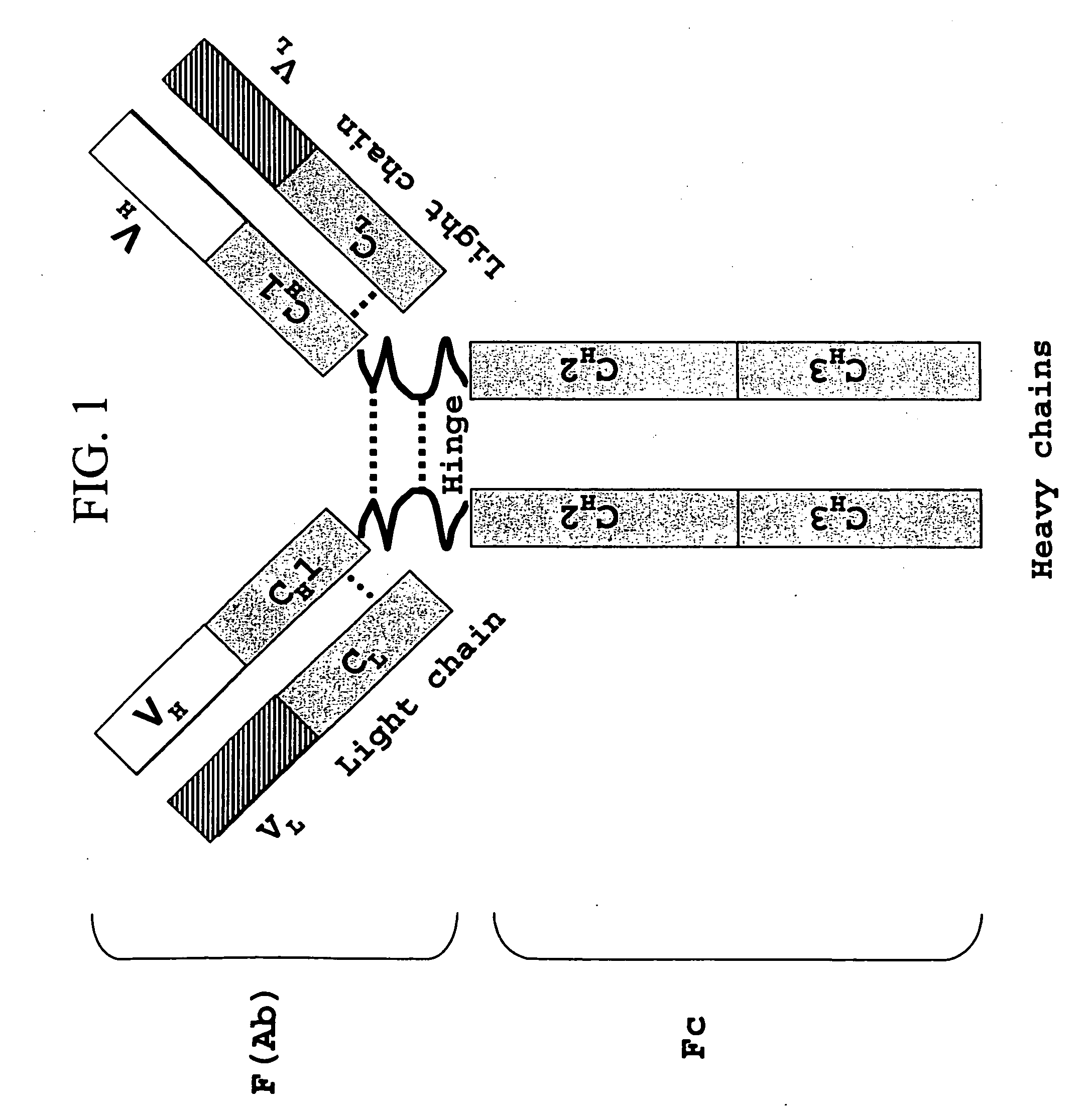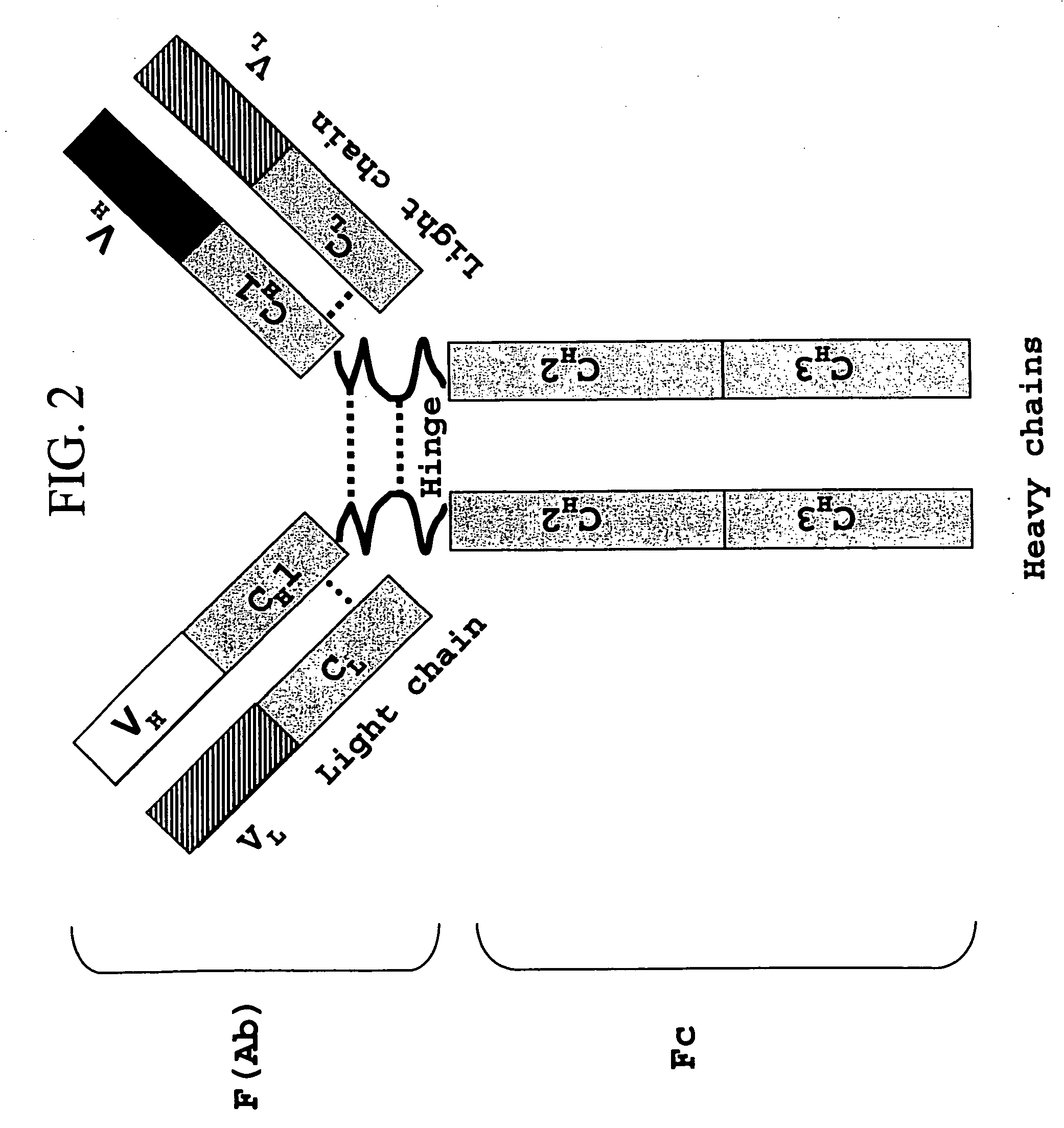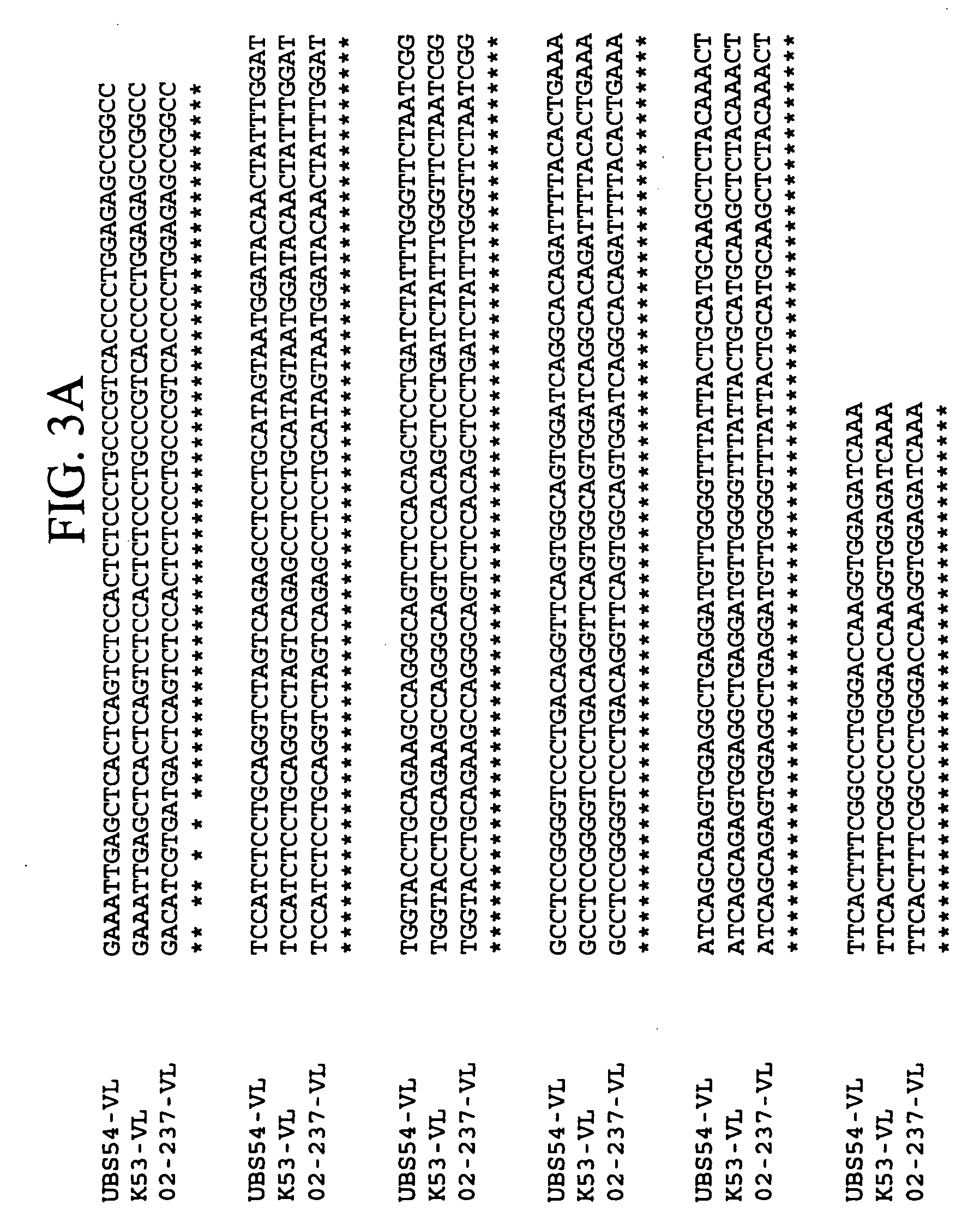Recombinant production of mixtures of antibodies
a technology of recombinant and mixture, applied in the field of biotechnology, can solve problems such as functional binding regions
- Summary
- Abstract
- Description
- Claims
- Application Information
AI Technical Summary
Benefits of technology
Problems solved by technology
Method used
Image
Examples
example 1
Production of a Mixture of Monoclonal Antibodies with a Common Light Chain and Two Different Heavy Chain-Variable Regions in a Single Cell
Clone UBS-54 and Clone K53 were previously isolated by selections on the colorectal cell line SW40 (Huls et al., 1999) and on a heterogeneous mixture of mononuclear cells of a patient with multiple myeloma (WO 02 / 18948, the entirety of which is incorporated herein by reference), respectively, with a semi-synthetic library (de Kruif et al., 1995b). Further studies revealed that clone UBS-54 and K53 bound to the EP-CAM homotypic adhesion molecule (Huls et al., 1999) and the membrane cofactor protein CD46 (WO 02 / 18948), respectively. DNA sequencing of the clones revealed that they were unique in the Heavy chain CDRs, but that they contained an identical light chain sequence (FIG. 3). The VH and VL of clones UBS-54 and K53 were inserted into an expression vector containing the HAVT20 leader sequence and all the coding sequences for the constant doma...
example 2
Production of a Mixture of Antibodies Against Human B-Cell Markers in a PER.C6™ Cell Line-Derived Clone
A method for producing a mixture of antibodies according to the invention, using expression in a recombinant host cell of a single light chain and three different heavy chains capable of pairing to the single light chain to form functional antibodies, is exemplified herein and is schematically shown in FIG. 6. Phages encoding antibodies capable of binding proteins present on human B-cells, i.e., CD22, CD72 and Major Histocompatibility Complex (MHC) class II (further referred to as HLA-DR) were previously isolated from a semi-synthetic phage library (de Kruif et al., 1995; van der Vuurst de Vries & Logtenberg, 1999, the entirety of which is incorporated herein by reference). DNA sequencing of the VH and VL sequences of the phages clone B28 (anti-CD22), clone I-2 (anti-HLA-DR) and clone II-2 (anti-CD72) revealed that they all contain a unique VH sequence but a common light chain se...
example 3
Screening of Clones Expressing Multiple Human IgGs for the Most Potent Mixture of Functional Human IgGs
Functionality of the antibody mixture is analyzed in cell-based assays to determine whether the human IgG1 mixture inhibits proliferation and / or induces apoptosis of B-cell lines, such as, for example, Ramos. Other cell lines can also be used. In addition, the antibody mixtures are analyzed for their potential to induce antibody-dependent cellular toxicity and complement-dependent cytotoxicity of, for example, Ramos cells.
In each of the following experiments, the functionality of the antibody mixture recognizing the targets CD22, CD72 and HLA-DR is analyzed and can be compared to each of the individual IgG1 antibodies and to an equimolar combination of the three individual IgG1 specificities.
To assess the ability of the antibody mixtures to inhibit the proliferation of Ramos cells, these cells are incubated in 96-well plates (0.1−1.0×105 / ml) with several concentrations (5-20 ...
PUM
| Property | Measurement | Unit |
|---|---|---|
| diameter | aaaaa | aaaaa |
| concentrations | aaaaa | aaaaa |
| concentration | aaaaa | aaaaa |
Abstract
Description
Claims
Application Information
 Login to View More
Login to View More - R&D
- Intellectual Property
- Life Sciences
- Materials
- Tech Scout
- Unparalleled Data Quality
- Higher Quality Content
- 60% Fewer Hallucinations
Browse by: Latest US Patents, China's latest patents, Technical Efficacy Thesaurus, Application Domain, Technology Topic, Popular Technical Reports.
© 2025 PatSnap. All rights reserved.Legal|Privacy policy|Modern Slavery Act Transparency Statement|Sitemap|About US| Contact US: help@patsnap.com



